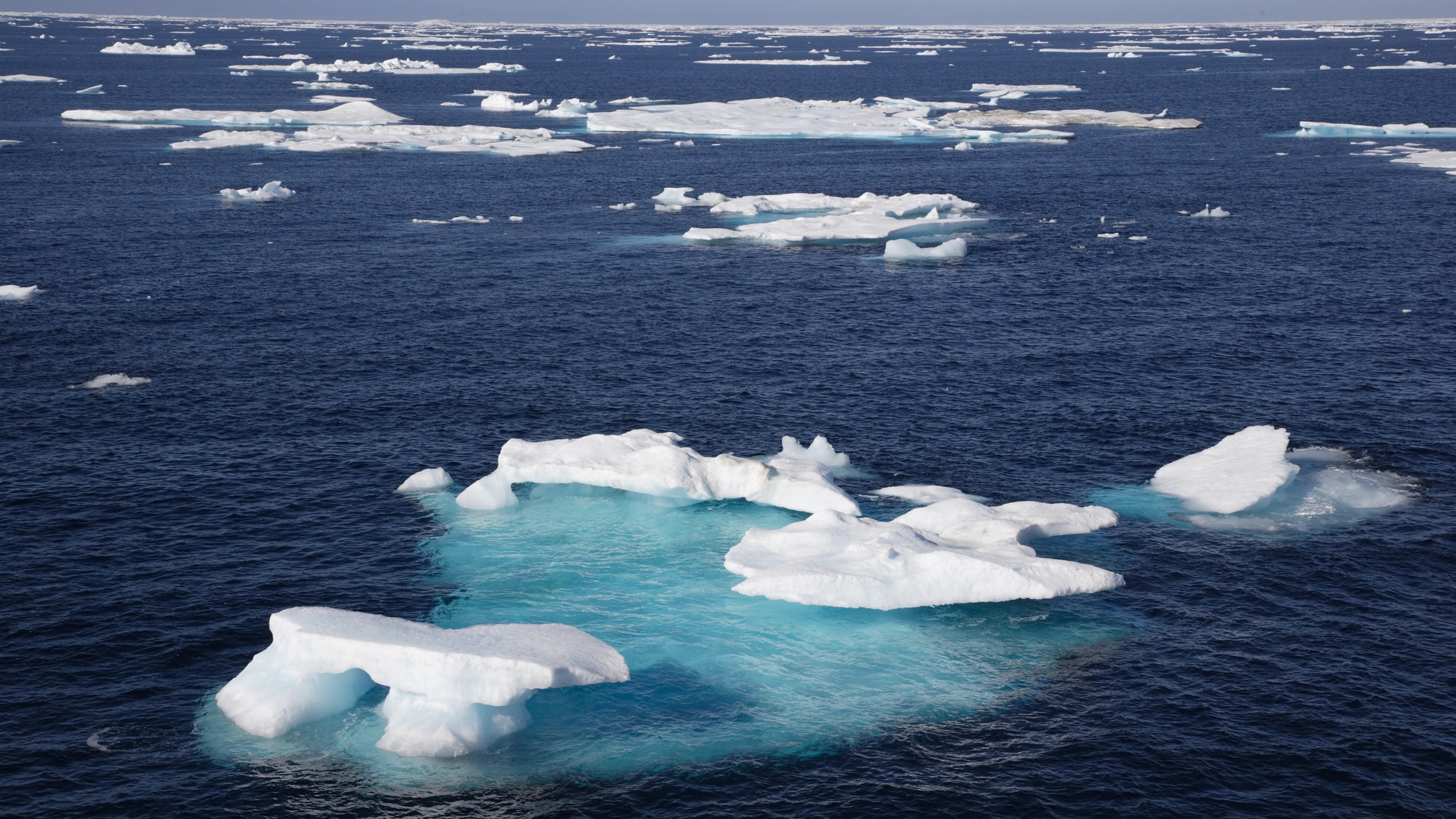

Each day an estimated 95 percent of the world’s data travels across the roughly 900,000 miles of submarine fiber optic cables criss-crossing the ocean floor. Modern life as we know it—from internet communications to video calls to streaming services—would look significantly different without this massive infrastructure. To keep up with the world’s insatiable data needs, construction could soon begin on a new cable located within a once-inaccessible environment.
Politico reports that a consortium of companies intends to move forward with the Far North Fiber project—a deep sea cable that would stretch over 9,000 miles through the Northwest Passage, connecting Europe to Japan, alongside additional landing sites in Alaska, Canada, Norway, Finland, and Ireland. Ironically, the potential endeavor is only possible due to one of the most pressing threats facing humanity.
As our digital lives travel along these submarine cables, they devour gigantic amounts of energy and further exacerbate climate change. The Arctic, for example, is currently warming almost four times faster than the rest of the planet, causing its sea ice to shrink by roughly 13 percent per decade. According to one Far North Fiber developer, however, all that terrifying environmental decimation creates a new business opportunity.
[Related: A 10-million-pound undersea cable just broke an internet speed record.]
The Arctic’s previously unthinkable thaws will present a “sweet spot where it’s now accessible and allows us a time window when we can get the cable safely installed,” Ik Icard, chief strategy officer at Far North Digital, told Politico.
Far North Fiber’s backers claim that, once constructed, their cable would also be better protected compared to similar lines elsewhere in the world. An estimated 100 to 150 lines are damaged every year globally, be it from accidental encounters with boat anchors and fishing equipment, or due to intentional sabotage.
The threat of sabotage is an increasing concern to the telecom companies overseeing deep sea cable systems. More than 90 percent of all Europe-Asia data traffic travels along cables within the Red Sea trading corridor. Thanks to a recent increase in the region’s geopolitical unrest and violence, cable lines face greater risk of damage. Just last month, three such lines were cut during ongoing Houthi rebel attacks on nearby shipping vessels.
Company representatives believe establishing a new route through the Northwest Passage could avoid similar issues in the future—at an estimated cost of €1 billion ($1.08 billion). That’s about four times the cost of laying a cable across the Atlantic Ocean, and around three times as much to do so in the Pacific. But despite the exponential price tag, the European Union has signaled its interest with a €23 million investment in Far North Fiber. The project’s developers also hope to convince the US and Canada to get involved.
“Nobody wants to cut a cable under the ice, it’s really hard to do,” Far North Digital co-founder Ethan Berkowitz said.
A study published in Nature Reviews Earth & Environment estimates the Arctic could experience seasonally ice-free waters as soon as 2035—less than a decade removed from Far North Fiber’s proposed 2026 launch date.
